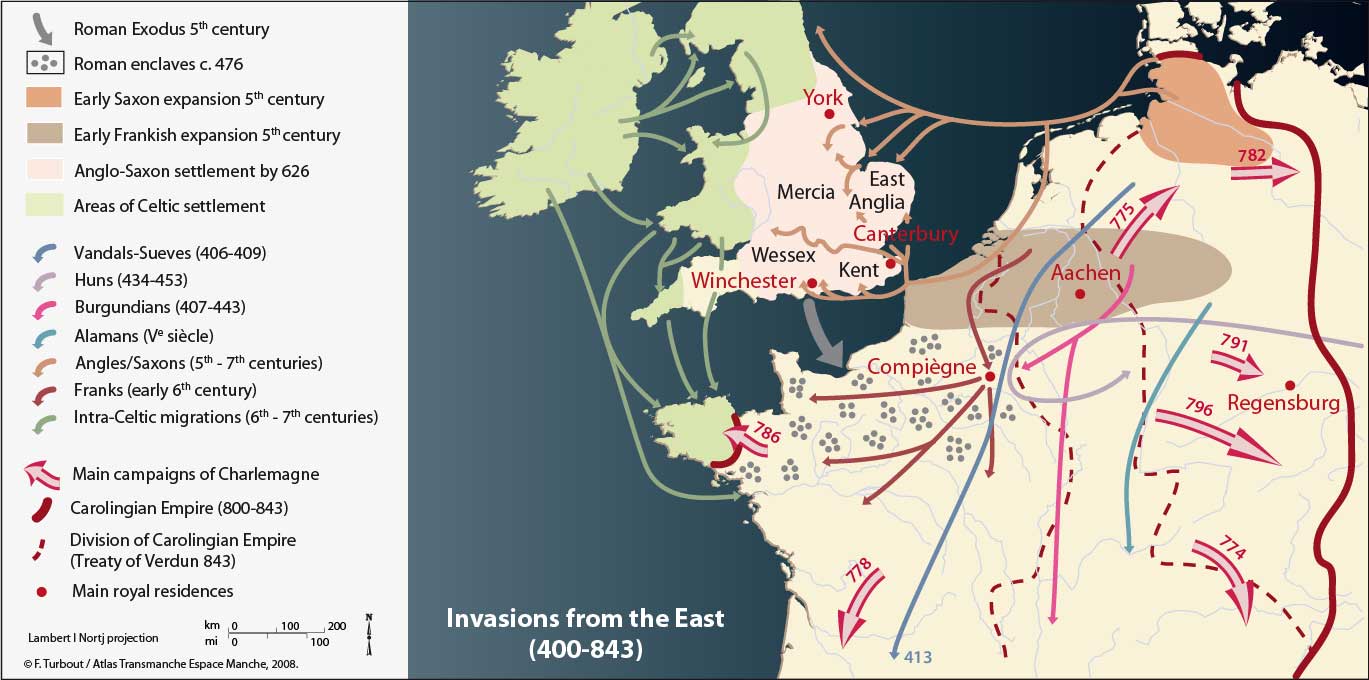

 Shared Histories
Shared Histories
In response to early raids into the Channel from the Franks in the Third Century, two Roman fleets were stationed on either side of the straits to defend Gallic and British shores. A century later, in the face of Saxon raids, stone forts were built along the so-called “Saxon Shore” from Norfolk to the Solent. By 410, the occupying armies of Rome had withdrawn from Britain and the failure of the remaining Romano-British aristocracy to find an accommodation with the invading Saxons led to their mass exodus across the Channel to Normandy and Brittany. The great movement of peoples from the East (the so-called “barbarian invasions”) was to extend over two centuries. Territorial rule and expansion were dictated by a constantly shifting kaleidoscope of alliances, achieved more often by conquest than colonisation. The Frankish expansion from their homeland on the lower Rhine was unusually rapid; by the middle of the 6th century, the greater part of Gaul was under their control, the more northern Gallo-Roman aristocracy having accepted Frankish rule following Clovis’ conversion to Catholic Christianity in 497.
By contrast, across the Channel, the first “King of the English” (Egbert 802-829) was not proclaimed until three centuries after the first Saxon landings. Even then, his successors would be severely challenged by the Vikings. King Alfred ultimately succeeded in preserving the independence of Wessex, but a treaty with the Danish leader Guthrum in 886 created a new frontier between Wessex and Danelaw along a boundary drawn from the upper Severn to the mouth of the Thames. The reign of Edgar (959-975) marked the apogee of the Anglo-Saxon Kingdom of England, accompanied by a corresponding resurgence of the arts.
The 10th century also saw the rise of the new Duchy of Normandy in the aftermath of the slow disintegration of the Carolingian Empire that was still under regular Viking attacks in the north. A Scandinavian political territory on the English Danelaw model was established when the Emperor Charles the Simple conceded a large area around the Seine Estuary to Rollon in 911. A powerful principality and dynasty had been born which, through marriage, would lay claim to the English throne in the next century.
top














